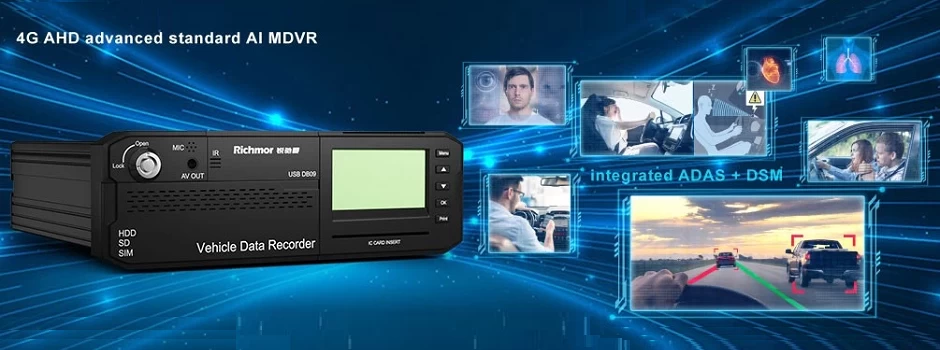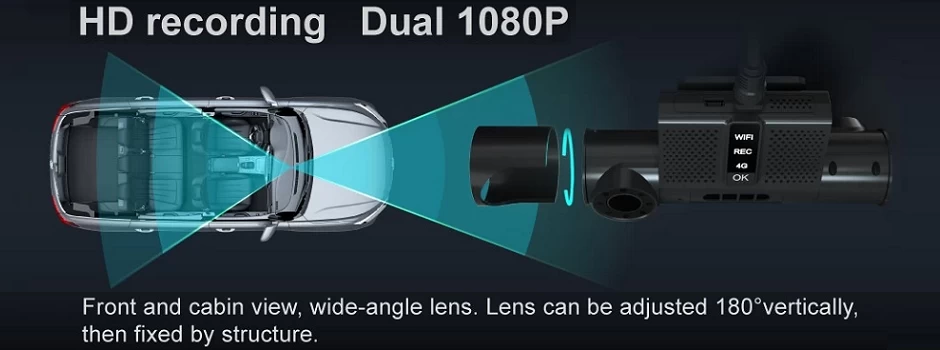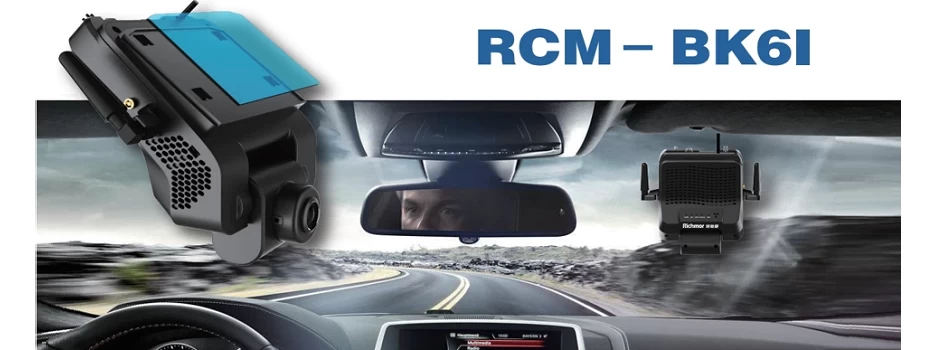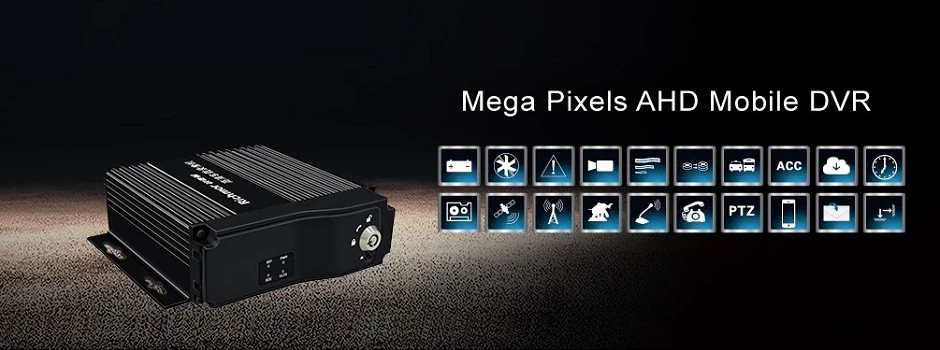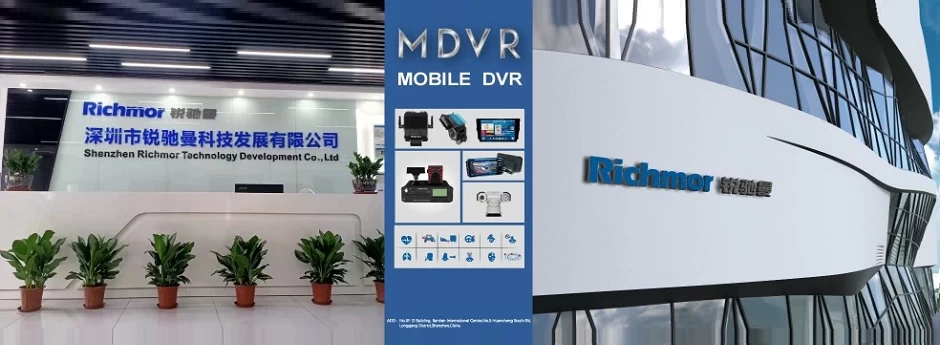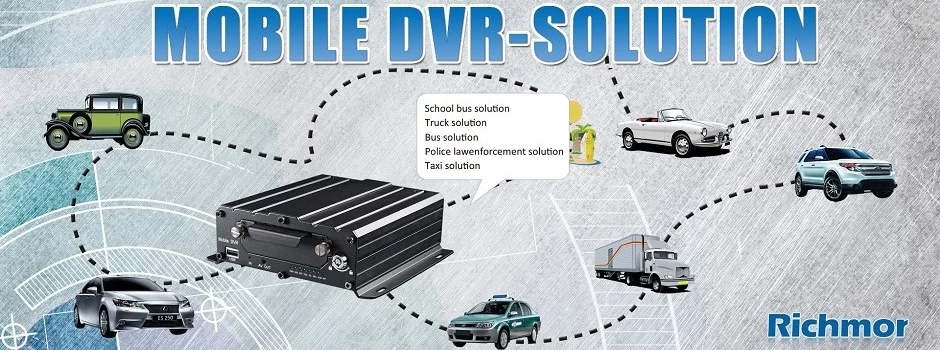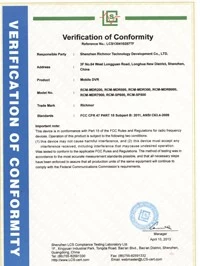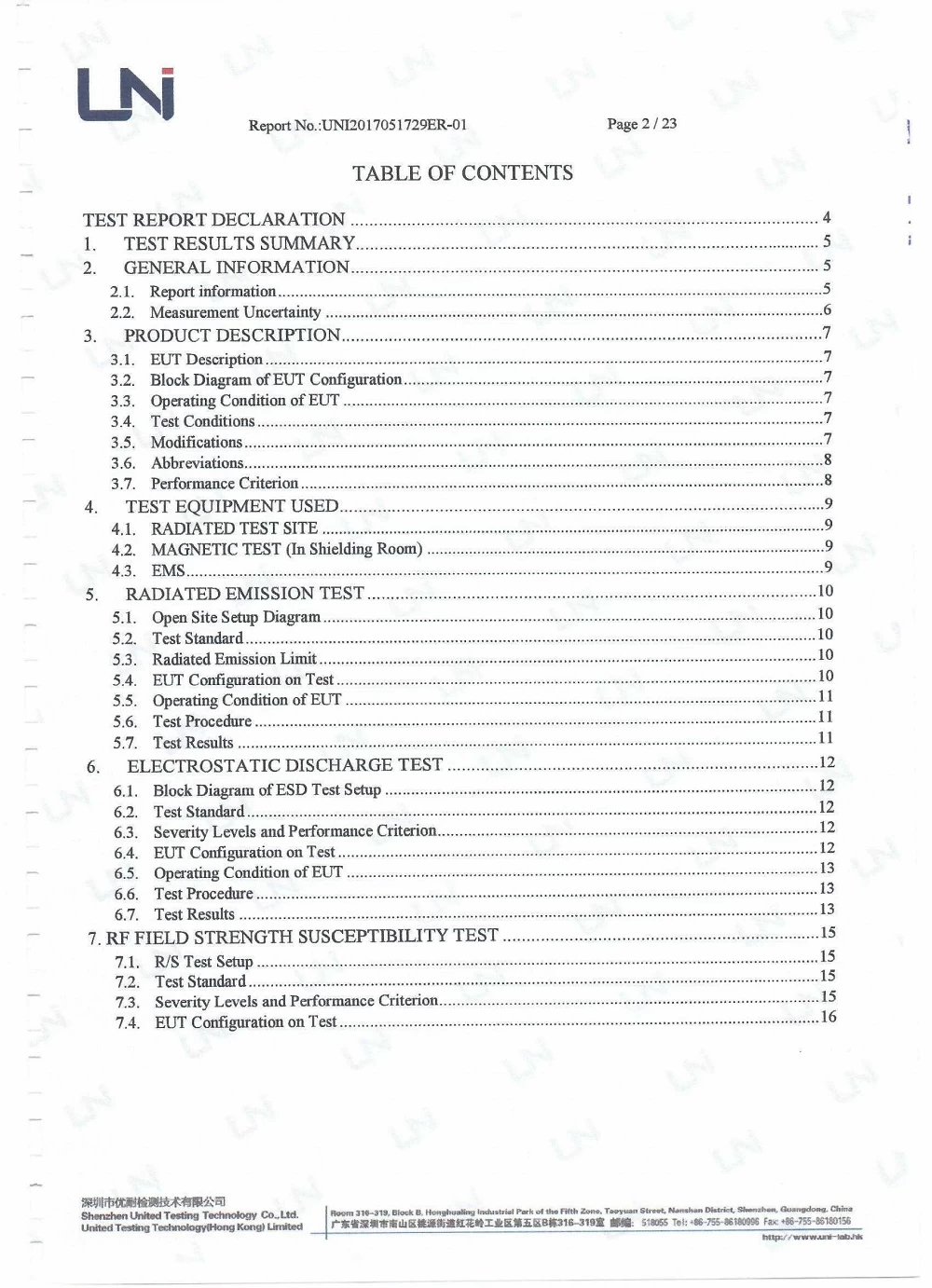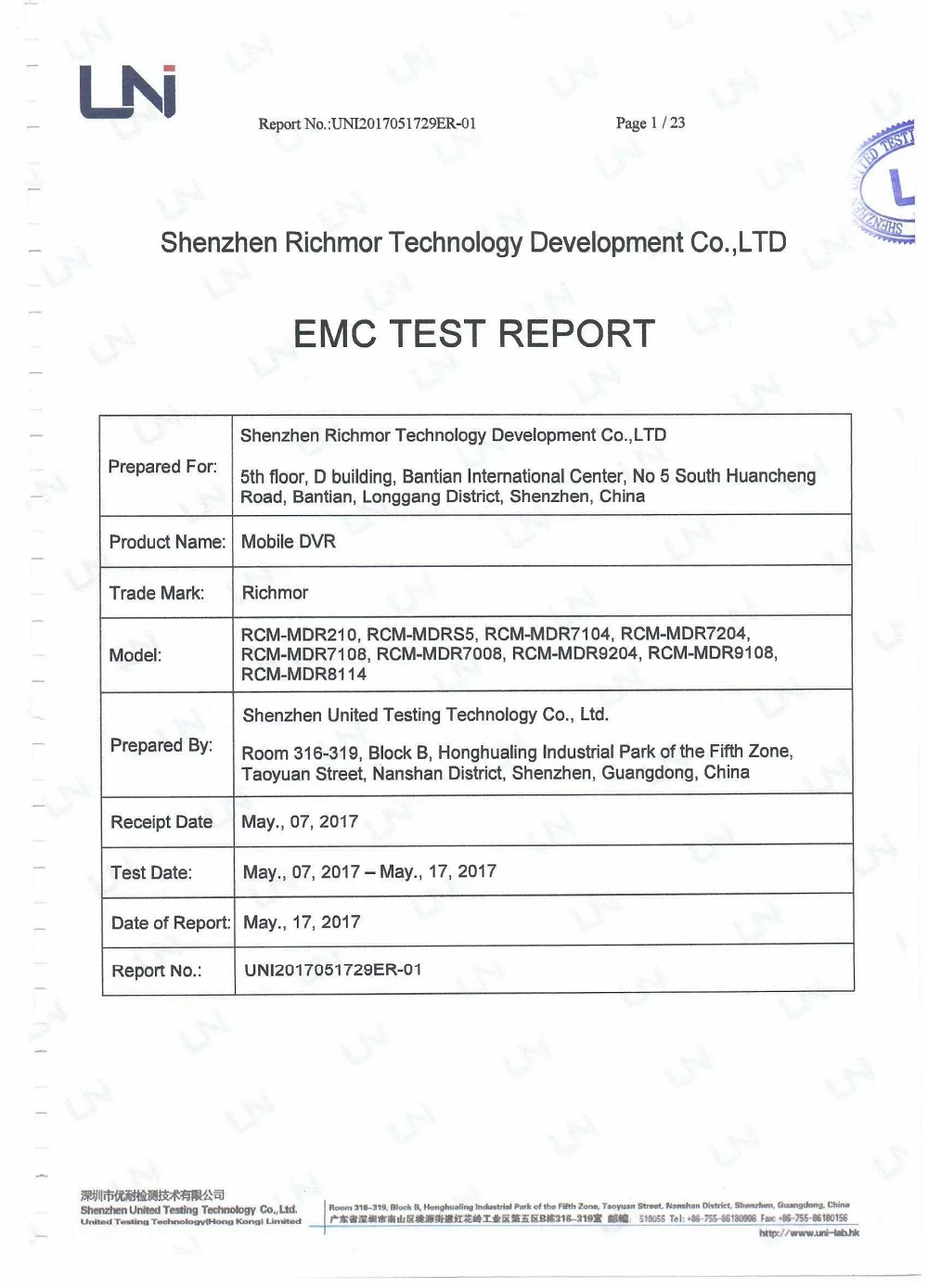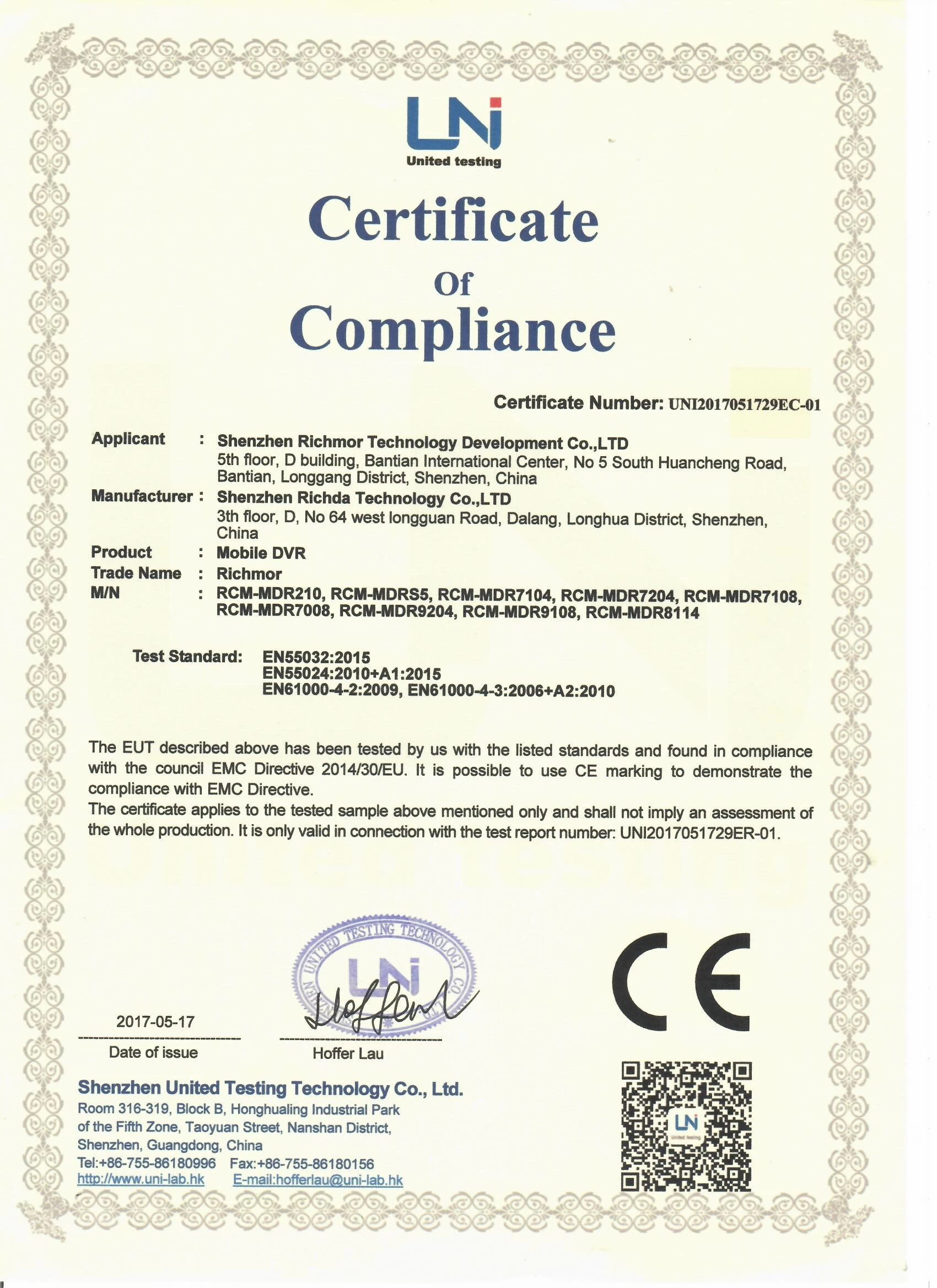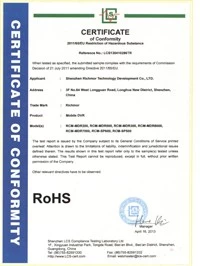A brief discussion on the development direction of vehicle DVR
richmor
richmor.net
2018-03-13 11:09:26
Development direction of vehicle DVR
In terms of technology, DVR has been developing for a long time. It has functions of video / voice recording, recording, remote monitoring and cloud mirror control. It also integrates functions such as picture segmentation, alarm control linkage, network transmission and so on. At present, DVR technology is basically mature, the function is basically perfect, and what will the future direction of DVR technology be?
1. The hardware can be summed up for faster processing and longer storage time.
With the development of chip technology, the higher performance CPU makes the DVR faster and more powerful. From early CIF hard disk VCRs to now D1 hard disk VCRs, 960H hard disk VCRs, hybrid hard disk VCRs, and HD-SDI hard disk VCRs. In addition, with the trend of high definition, the demand for storage is also increasing, and the DVR hard disk management technology is also improving. Basically, DVR may support more hard disk interfaces, support RAID technology, and support the compatibility of storage technologies such as DAS, SAN, and NAS.(HD Car DVR wholesales china)
2, the way of coding is more advanced
At present, the mainstream DVR technologies used in the market are MPEG-4, H.264, M-JPEG.MPEG-4 and H. 264 is the most common mode of compression in China, and H. 264 the demand for more network transmission has become the mainstream. In the future in order to make the embedded DVR has more extensive applicability, unified algorithms will be the future development trend, but this is not a unified enterprise which based on domestic standards, and requires broad participation of government departments and the DVR industry chain wide on the various types of enterprises. For example, China has a AVS compression algorithm with independent intellectual property rights, and H. 265 compression algorithm, relative to H. 264 there are many revolutionary changes in many ways.
AVS (AudioVideocodingStandard, audio and video coding standard) is the abbreviation of "information technology advanced audio and video coding" series standard. It is the second generation source coding standard with independent intellectual property rights, and the common basic standard of digital audio and video industry. AVS through a one-stop licensing policy is simple, to solve the deadlock problem is AVC patent licensing, national and international standards for open, easy to popularize. In addition, AVC is only a video coding standard, and AVS is a complete standard system including system, video, audio and media rights management, providing a more comprehensive solution for the digital audio and video industry. With the support of national policy, it has the potential to be a unified standard for video surveillance industry.
The H.265 standard is developed on the basis of the H.264 standard, combined with H. 264 the mainstream position in the field of video applications can be foreseen H. 265 agreement in the future broad prospects for development. Some of the world's mainstream television organizations and media operators have chosen H. 264 as a standard of media format, some major codec equipment vendors have also been actively involved in the research of the H.265 standard.(car monitor wholesales china)

3. The function of interoperability is more simple and easier
Compared with IPC's ONVIF protocol, DVR has a slow upgrade in the software version, and is less open to integration and conformance. The intercommunication between products, the openness of the system, the company has no uniform standard for the product. At present, the access of the system is mainly through the way of SDK, and each manufacturer has their own affairs. It can only solve the interconnection and interconnection at a certain level, which is a long-term process from the real interconnection.(Vehicle Camera system supplier)
The line transmission function is becoming more and more important, and together with GPS, it has become a marking function. 3G network covers a wide area, and it is the most important point of the vehicle monitoring network. But the features of the 3G network determine that the network can not be as stable and reliable as the wired network. With the high definition, this problem is more prominent. Providing stable and clear back - end browsing images in an unstable network is a problem that needs to be considered in front of the various manufacturers.
In terms of technology, DVR has been developing for a long time. It has functions of video / voice recording, recording, remote monitoring and cloud mirror control. It also integrates functions such as picture segmentation, alarm control linkage, network transmission and so on. At present, DVR technology is basically mature, the function is basically perfect, and what will the future direction of DVR technology be?
1. The hardware can be summed up for faster processing and longer storage time.
With the development of chip technology, the higher performance CPU makes the DVR faster and more powerful. From early CIF hard disk VCRs to now D1 hard disk VCRs, 960H hard disk VCRs, hybrid hard disk VCRs, and HD-SDI hard disk VCRs. In addition, with the trend of high definition, the demand for storage is also increasing, and the DVR hard disk management technology is also improving. Basically, DVR may support more hard disk interfaces, support RAID technology, and support the compatibility of storage technologies such as DAS, SAN, and NAS.(HD Car DVR wholesales china)
2, the way of coding is more advanced
At present, the mainstream DVR technologies used in the market are MPEG-4, H.264, M-JPEG.MPEG-4 and H. 264 is the most common mode of compression in China, and H. 264 the demand for more network transmission has become the mainstream. In the future in order to make the embedded DVR has more extensive applicability, unified algorithms will be the future development trend, but this is not a unified enterprise which based on domestic standards, and requires broad participation of government departments and the DVR industry chain wide on the various types of enterprises. For example, China has a AVS compression algorithm with independent intellectual property rights, and H. 265 compression algorithm, relative to H. 264 there are many revolutionary changes in many ways.
AVS (AudioVideocodingStandard, audio and video coding standard) is the abbreviation of "information technology advanced audio and video coding" series standard. It is the second generation source coding standard with independent intellectual property rights, and the common basic standard of digital audio and video industry. AVS through a one-stop licensing policy is simple, to solve the deadlock problem is AVC patent licensing, national and international standards for open, easy to popularize. In addition, AVC is only a video coding standard, and AVS is a complete standard system including system, video, audio and media rights management, providing a more comprehensive solution for the digital audio and video industry. With the support of national policy, it has the potential to be a unified standard for video surveillance industry.
The H.265 standard is developed on the basis of the H.264 standard, combined with H. 264 the mainstream position in the field of video applications can be foreseen H. 265 agreement in the future broad prospects for development. Some of the world's mainstream television organizations and media operators have chosen H. 264 as a standard of media format, some major codec equipment vendors have also been actively involved in the research of the H.265 standard.(car monitor wholesales china)

3. The function of interoperability is more simple and easier
Compared with IPC's ONVIF protocol, DVR has a slow upgrade in the software version, and is less open to integration and conformance. The intercommunication between products, the openness of the system, the company has no uniform standard for the product. At present, the access of the system is mainly through the way of SDK, and each manufacturer has their own affairs. It can only solve the interconnection and interconnection at a certain level, which is a long-term process from the real interconnection.(Vehicle Camera system supplier)
The line transmission function is becoming more and more important, and together with GPS, it has become a marking function. 3G network covers a wide area, and it is the most important point of the vehicle monitoring network. But the features of the 3G network determine that the network can not be as stable and reliable as the wired network. With the high definition, this problem is more prominent. Providing stable and clear back - end browsing images in an unstable network is a problem that needs to be considered in front of the various manufacturers.


